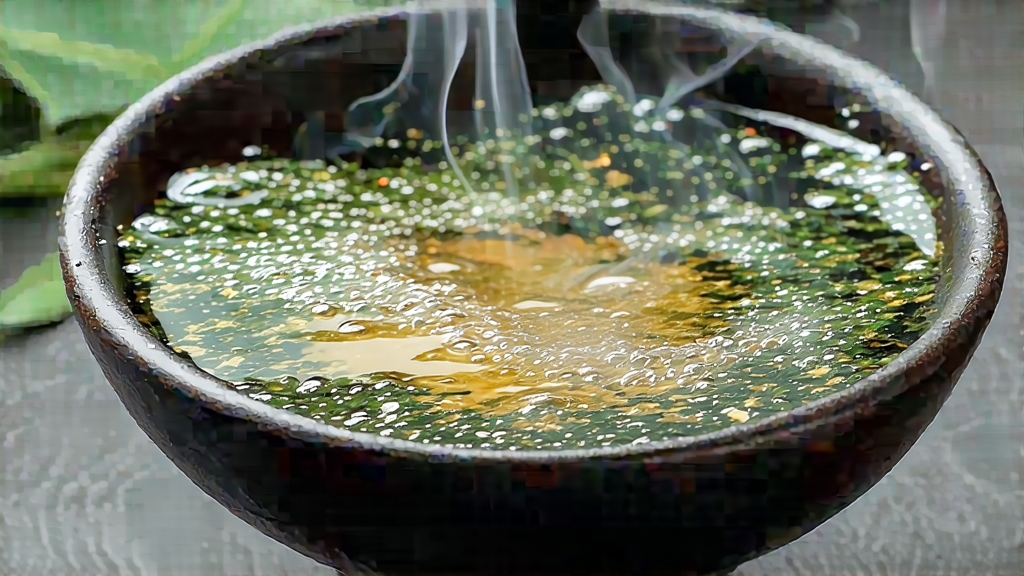
Walk into any serious tea house from Taipei to Toronto and you will almost certainly find a shelf devoted to one name that sounds more like poetry than produce: Tie Guan Yin, “Iron Goddess of Mercy.” To the Chinese nose those four syllables conjure orchards of orchid, warm basalt, and the sweet breath of charcoal. To the international palate they promise a cup that is at once green tea’s freshness and black tea’s depth, a liquid paradox that has seduced emperors, sea captains, Silicon-Valley coders, and Parisian sommeliers alike. This article invites you to travel beyond the label, into the mist-cradled hills of Anxi county, Fujian province, where Tie Guan Yin was born, where it almost died, and where it is now being reborn again—leaf by leaf, roast by roast, infusion by infusion.
- A Brief, Mythic History
Legend places Tie Guan Yin’s birth during the Yongzheng reign (1723-1735). A poor farmer named Wei Yin, devout to the Bodhisattva Guan Yin, dreamt one night of a cave behind Beishan rock. There he found a single tea shoot shimmering in jade light. Upon waking he located the cave, transplanted the shoot, and nurtured it into a bush whose tea carried the fragrance of stone orchids and the lingering sweetness of mercy itself. The name “Iron” was later added to honor the iron-like weight of the tightly rolled pellets and the iron-colored patina the leaf takes on after medium roasting. Whether myth or marketing, the story captures the tea’s dual nature: ethereal aroma anchored by mineral heft.
Fast-forward to the 1970s: Anxi farmers, riding the green-tea boom, began to lighten oxidation, creating a jade-green Tie Guan Yin that dazzled Taiwan and Southeast Asia. By the 1990s the style had swung again—heavier roast, deeper fruit, the so-called “traditional” or nong xiang profile. Today Anxi produces at least four stylistic families, each a response to market whim, weather pattern, and the stubborn creativity of its tea masters.
- The Four Faces of a Single Cultivar
Although all authentic Tie Guan Yin springs from the genetically identical Hongxin Wei cultivar (red-heart tail), processing choices divide it into:
• Jade Tie Guan Yin (qing xiang): 18-25 % oxidation, zero roast. Neon-green leaf, lily-of-the-valley aroma, brisk asparagus-like finish.
• Light-Roast (qing huo): quick pass through electric ovens at 80 °C for two hours; aromas of honeydew and toasted almond.
• Medium-Roast (zhong huo): 100-120 °C charcoal embers for six to eight hours; notes of baked apricot, warm granite, and a cooling licorice aftertaste known as yun gan hui gan.
• Heavy-Roast (nong xiang): bamboo-basket charcoal firing repeated over two months; liquor as dark as sherry, flavors of burnt caramel, pipe tobacco, and the scent of a just-lit incense coil.
Each style is still Tie Guan Yin because the leaf’s cellular architecture—thick cuticle, high ratio of ionone precursors—survives the transformations, ensuring that tell-tale orchid top note never disappears entirely.
-
From Bush to Pellet: The Craft in Seven Acts
Harvest begins when the morning dew burns off and the leaf’s turgor pressure peaks—usually between 10 a.m. and noon in late April for spring tea, or early October for autumn. Only the top three leaves and the half-open bud are plucked, a standard called xiao kai mian. What follows is a choreography of stress and rest: -
Withering (wei diao): leaves are spread on bamboo racks under shade cloth for two hours, softening cell walls.
-
Sunlight Bath (shai qing): twenty minutes of gentle solar wilting triggers grassy-to-floral conversion enzymes.
-
Disco of Discipline (yao qing): the signature four-directional tossing inside a cylindrical bamboo drum rotating at 30 rpm. Leaf edges bruise, oxidation ignites, and the room fills with the scent of ripe mango.
-
Oxidation Pause (zuo qing): leaves rest in piles, generating heat up to 32 °C; oxidation climbs to